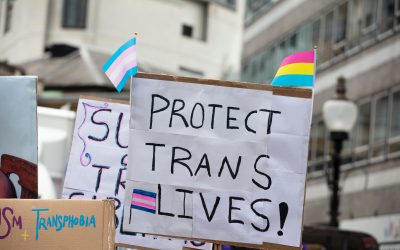
Understanding the vital link between social determinants of health and environmental justice

By Angela Zhong
August 29, 2024
Growing up in a city economically tethered to the WTI oil price, I dismissed natural disasters and environmental health concerns as part of life’s occupational hazards. Only after transitioning from my high school to a college 1,800 miles away did I realize my childhood, marked by corrosive drywall and frequent 100-year hurricanes, was far from normal. Though the physical marks were clear in the water damage, climate change also made an indelible impression on my mental health.
As we navigate the ever-evolving landscape of adolescent health and well-being, it becomes increasingly clear that a holistic approach is essential. One significant area that deserves more attention is the intersection between environmental factors and social determinants of health. While these topics might seem distinct, their interplay profoundly affects the health outcomes of adolescents. In this post, we’ll explore how environmentalism is crucial in shaping the health and future of young people, particularly in the context of adolescent sexual and reproductive health.
Social determinants of health are the conditions in which people are born, grow, live, work, and age. These factors—such as socioeconomic status, education, physical environment, employment, and social support networks—significantly impact health outcomes. For adolescents, who are in a critical stage of development, these determinants can influence their physical, emotional, and sexual health.
Some key social determinants for adolescents can include:
- Economic Stability: Access to resources such as food, housing, and health care are vital. Economic hardship can lead to stress and limited access to health care, both of which can negatively impact sexual and reproductive health.
- Education Access and Quality: Educational opportunities shape not just future economic prospects but also health literacy and the ability to make informed health decisions, including those related to sexual health.
- Social and Community Context: Strong social support systems and community engagement can foster a safe environment for adolescents to grow and explore their identities.
- Health and Health Care: Access to affordable, youth-friendly healthcare services, including sexual and reproductive health services, is crucial for preventing and managing health issues.
- Neighborhood and Built Environment: Safe neighborhoods with access to recreational spaces and clean environments contribute significantly to overall health and well-being.
Environmentalism extends beyond protecting natural resources; it encompasses the quality of the environments where we live, learn, and play. For adolescents, particularly those in communities that have been subjected to systemic oppression, environmental factors can be a significant barrier to achieving optimal health.
Environmentalism extends beyond protecting natural resources; it encompasses the quality of the environments where we live, learn, and play. For adolescents, particularly those in communities that have been subjected to systemic oppression, environmental factors can be a significant barrier to achieving optimal health. For example, adolescents in oppressed communities are often more exposed to pollutants from industrial activities, poor air quality, and contaminated water sources. Poor housing can exacerbate these health issues, ranging from respiratory problems due to mold and poor ventilation to stress from overcrowding.
Additionally, the impacts of climate change—such as extreme weather events, food insecurity, and displacement—disproportionately affect populations that have been systemically oppressed, including adolescents. These stresses can exacerbate existing health disparities and affect mental health and stability. We have already begun to see how climate change can induce anxiety in youth.
Environmental justice advocates for fair treatment and meaningful involvement of all people in environmental laws, regulations, and policies. By addressing environmental injustices, we can reduce health disparities among adolescents. This means advocating for cleaner, safer environments and ensuring that communities that have been systemically oppressed have a voice in environmental decisions that affect them.
Of course, addressing the intersection of social determinants of health and environmental factors requires a collaborative approach. Healthcare providers, educators, community leaders, and policymakers must work together to create environments that support healthy living. Sexual health educators and youth-supporting professionals can start by using a trauma-informed and healing-centered lens to hold space for and acknowledge how our changing climate affects overall health and well-being of young people.
Initiatives could include creating green spaces in urban areas, improving access to nutritious food, and ensuring affordable health care. Furthermore, adolescents themselves can be powerful advocates for change. Encouraging and supporting youth-led initiatives can lead to innovative solutions and increased engagement in environmental and health issues. And these can have a multiplicative effect–programs that foster leadership and activism in young people can have lasting impacts on their communities and beyond.
Understanding and addressing the links between social determinants of health and environmental factors is essential for promoting the well-being of adolescents. As we continue to support youth in their journey to adulthood, integrating environmental justice into our health strategies is not just beneficial—it’s necessary. By doing so, we can create healthier, more equitable futures for all young people.
Join the Conversation!
We want to hear from you. How are you integrating environmental health into your work with adolescents? Share your stories and strategies on social media using the hashtag #HealthyTeensEnvironment. Together, we can make a difference.
Feel free to reach out to Healthy Teen Network with any questions or to contribute to the ongoing discussion on promoting the health and well-being of adolescents through a lens of environmentalism and social determinants of health. Contact our team at Thrivology for more information.
PHOTO CREDIT: Katie Rodriguez on Unsplash
Angela Zhong is a Thrivology Youth Leader. While pursuing a Bachelor’s degree from Harvard in economics and environmental science public policy, Angela has advocated for youth climate action in numerous spaces, including at the World Economic Forum, World Bank Spring Meetings, and UN General Assembly. These experiences have propelled her to engage further in youth leadership as part of the Healthy Teen Network cohort. Learn more about Angela.












